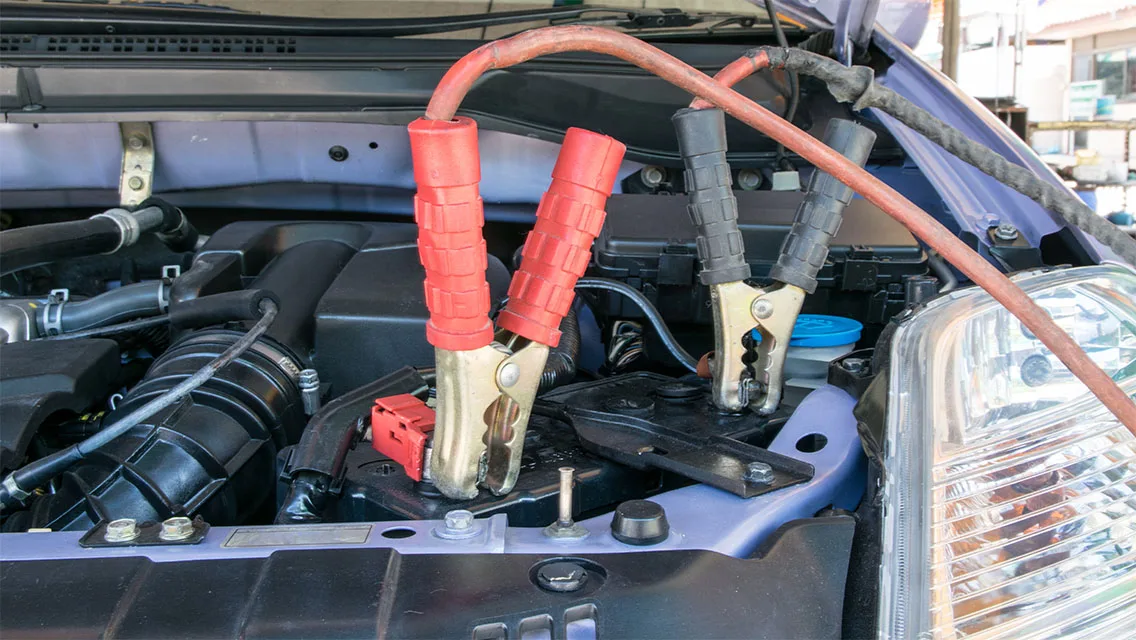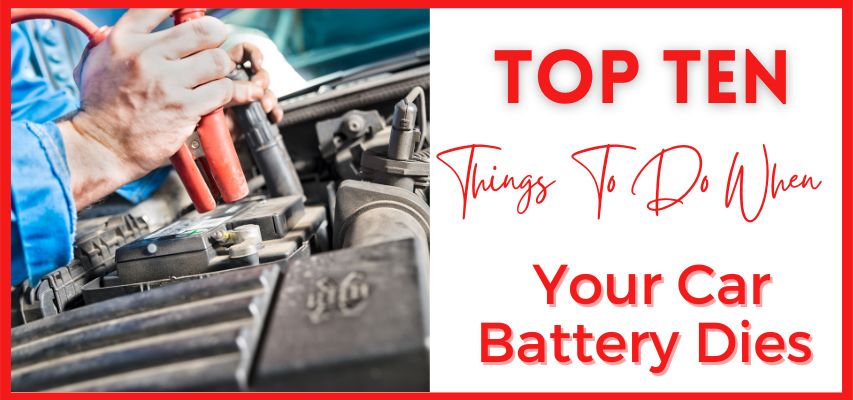Discover the top ten essential steps to take when your car battery dies, from jump-starting methods to preventive measures for hassle-free road trips. Nothing is more frustrating than getting ready to hit the road, turning the key in the ignition, and hearing nothing but silence. Your car’s battery helps power many of the electrical functions in your vehicle, including starting your car, lighting your dashboard lights, and powering your audio system and accessories. If your car battery dies while driving, you could be stranded on the side of the road, or worse, in the middle of the road.
Don’t let a dead car battery stop you in your tracks! Find out what happens when your battery dies while driving, what to do next, and how to prevent the problem. Yes, we’ve all been there—the dreaded dead car battery. It can happen unexpectedly and leave you stranded in the middle of nowhere or a crowded parking lot. But don’t worry, because in this guide we’ll walk you through the ten most important things to do when your car battery dies, ensuring you’re prepared and back on track in no time.
Also, read: Top 10 Reasons to buy an electric car
Dead Battery? Don’t Panic! Top 10 Hacks to Get You Back on the Road
In this comprehensive guide, we explore the top ten actions to follow when facing a dead car battery, including jump-starting techniques, seeking assistance, and tips for prolonging battery life.

1. Confirm It’s a Dead Battery
Before attempting any solution, it is essential to make sure that the real problem is a dead battery. When you turn the key and experience dimmed lights, slow starting sounds, or a complete electrical failure, there’s a good chance your battery is dead. However, it is important to check other electrical components, such as the radio, interior lighting, and power windows. If they work fine, the problem may be something else, such as a faulty starter or alternator.
Also, read: Ten tips for improving your car’s fuel economy
2. Seek Assistance
If you find yourself in an awkward place or unsure of starting the car, don’t hesitate to seek help. Calling a friend, family member, or roadside assistance for help is a prudent move. Many insurance policies and car clubs offer roadside assistance as an additional or included benefit, which can save you the trouble of dealing with the situation yourself.
3. Use Jumper Cables
Jump-starting a car is a common and effective solution, but it requires another vehicle with a working battery. You can do it safely like this:
- Place both cars close enough, but make sure they don’t touch each other.
- In both cars, turn off the ignition and apply the parking brake.
- Connect the red (positive) terminal of the jumper cable to the positive terminal of the dead battery.
- Connect the other red terminal to the positive pole of the working battery.
- Connect the black (negative) terminal to the negative pole of the working battery.
- Finally, connect the other black terminal to a metal surface outside the dead battery, such as a screw or bracket (do not connect it to the negative terminal of the dead battery to avoid sparking).
- Start the engine of a working car and let it run for a few minutes before attempting to start the car. Once your car is running, carefully remove the jumper cables in reverse order.
Also, read: Top 10 Myths About Electric Cars
4. Know the Manual Transmission Trick
If you have a manual transmission car, you can try the “push-start” method, also known as “bump-start” or “pop-start.” It works like this:
- Ask a friend or bystander to help you push the car to gain some speed (at least 5–10 mph).
- Once you have enough momentum, shift into second gear (or a higher gear) and quickly release the clutch pedal while depressing the accelerator. Get ready for a bit of a shock.
- Note that this method will not work on cars with an automatic transmission. Additionally, the push-start method is not a long-term solution and should only be used to get your car to a safe location for further inspection.
5. Keep a Portable Jump Starter
Investing in a jump starter is a smart decision, especially if you often drive alone or in remote areas. Portable starters are compact, lightweight, and easy to use. They come with built-in safety features to prevent damage to your vehicle. These devices work similarly to traditional jumper cables but do not require an additional car. Instead, they use their power source to start your vehicle. Keep the starter charged and check its condition regularly.
Also, read: Ten things to consider when buying a hybrid car
6. Carry a Battery Charger
If your car battery is not completely discharged, you can recharge it using a battery charger. A battery charger can be a lifesaver, especially if you have access to an electrical outlet. To use it, connect the charger to the battery according to the manufacturer’s instructions. It recharges the battery, so you won’t have to rely on jump-start methods often.
7. Inspect Battery Connections
Sometimes a dead battery can be caused by loose or corroded connections. Check the battery terminals for signs of corrosion or buildup. If you notice corrosion, you can clean the terminals with a mixture of baking soda and water. Gently clean the terminals with a wire brush, and then rinse with clean water. After cleaning, make sure the connections are tight and secure.
Also, read: Top 10 Emerging Technologies for Autonomous Cars in 2024
8. Consider a Replacement
Car batteries have a limited lifespan, usually around 3–5 years, depending on usage and climate. If your battery drains frequently, even after starting it or charging it, it may be time to replace it. Consult your vehicle’s manual to find the appropriate size and type of battery for your vehicle. Consider choosing a high-quality battery for better reliability and longevity.
9. Limit Electrical Usage
Suppose you have successfully started your car and put it into operation, but the battery is still showing signs of weakness. In such a case, it is important to limit the use of electrical accessories such as air conditioning, radio, lights, and heated seats. This will reduce the stress on the battery and give you enough time to go to a mechanic or auto parts store to test the battery and replace it if necessary.
Also, read: Top 10 Advancements in Electric Vehicle Charging Infrastructure in 2024
10. Learn Preventive Measures
Prevention is the key to avoiding future car battery problems. Include these precautions in your routine to ensure the long life of your car battery:
- Check the battery regularly for signs of wear, leakage, or damage.
- Keep the battery and its connections clean and free of corrosion.
- If you are not going to use the car for an extended time, consider using a battery tray or disconnecting the battery to prevent discharge.
- Do not leave headlights or other electrical devices on when the engine is off, as this may drain the battery.
FAQs on What to Do When Your Car Battery Dies?
Q: Can I start my car with a higher-capacity battery?
Although technically possible, it is not recommended. Jump starting with a battery that has a significantly higher capacity can cause damage to the car’s electrical system and other components.
Q: How often should I replace my car battery?
Car batteries last an average of 3 to 5 years. However, battery life can be affected by factors such as weather conditions, driving habits, and the quality of the battery itself.
Q: Can a bad alternator cause a dead battery?
Yes, a faulty alternator can cause a dead battery by failing to charge the battery while driving.
Also, read: Top 10 Electric Vehicle Technologies
Q: Is it safe to start the car in the rain?
Starting your car in the rain is generally safe, but it is essential to follow safety precautions to avoid an accident. Be careful not to touch wet surfaces and keep jumper cables away from water.
Q: Will my car battery die if I leave the lights on?
Leaving the headlights or other electrical devices on while the engine is off can drain the battery or cause it to discharge. Always double-check that all electrical accessories are turned off before leaving the vehicle.
Conclusion
Dealing with a dead car battery can be stressful, but if you know the top ten things to do when your car battery dies, you can handle the situation with confidence. Confirm the problem, seek help if needed, and prepare tools such as jumper cables, jump starters, and battery chargers. Regular maintenance and preventative measures will help extend the life of your car battery and keep you safe on the road. Remember to always put safety first and consult a professional mechanic if you experience persistent battery problems. With the right knowledge and preparation, you can deal with a dead car battery and get back on the road in no time. Safe driving!
Also, read: Top 10 Myths About Electric Vehicle Maintenance Busted


































